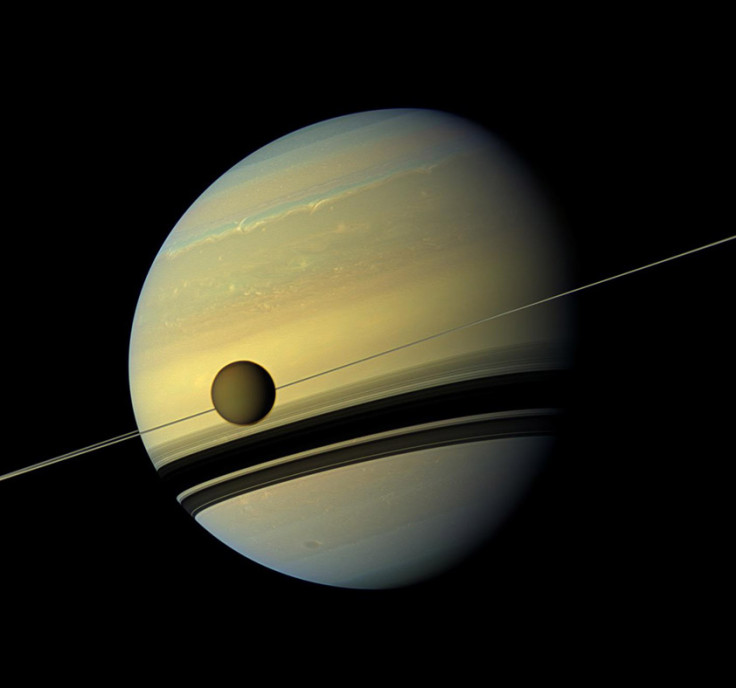Is life possible on Titan? Chemical 'precursors' of life confirmed on Saturn's largest moon
Building blocks of cell membranes found in the moon's atmosphere

Saturn's largest moon Titan has been found to have the right chemicals that can support cell membranes, according to Nasa. Scientists have found acrylonitrile, also known as vinyl cyanide, a compound that can form stable structures - the building blocks of cell membranes.
The findings were confirmed after a series of "11 high resolution data sets", provided by the Atacama Large Millimeter/submillimeter Array (ALMA) in Chile were combined. The research team was able to identify spectral lines that match the acrylonitrile fingerprint.
"We found convincing evidence that acrylonitrile is present in Titan's atmosphere, and we think a significant supply of this raw material reaches the surface," said Maureen Palmer, a researcher with the Goddard Center for Astrobiology at Nasa's Goddard Space Flight Center.
Titan has been under the scanner as one of the places where alien life could possibly be supported, owing to its makeup and chemical composition. Nasa has been looking at Saturn's largest moon for traces of life that is methane-based, according to a report filed in 2010. The conclusions were drawn from data collected from Cassini.
On Earth, cells that make up tissues are enclosed within membranes that are composed of water and lipids. Cell membranes are what protect cells from the environment surrounding it, and in a place like Titan, chemicals like water and lipids would not survive, so they have to be made of materials that are abundant as well as capable of sustaining membranes in their own way, reports New Scientist.
The surface temperature on Titan drops to as low as -178 degrees Celsius, so if cell membranes were to exist, it would have to be formed within seas of methane present on the moon, according to Nasa.
Nasa reported in 2015 that if there was any chance of cell membranes forming on Titan, with structures thin and flexible, similar to the lipid bilayers found in cells on Earth, the "team identified acrylonitrile as the best candidate".
Paulette Clancy, an author of the 2015 study identifying vinyl cyanide as potential cell material, said: "They (cells) have to find some way to protect themselves from the ravages of the outside world in order to get things (life) started."
"The ability to form a stable membrane to separate the internal environment from the external one is important because it provides a means to contain chemicals long enough to allow them to interact," said Michael Mumma, director of the Goddard Center for Astrobiology.
The atmosphere on Saturn's largest moon is heavy with nitrogen and the surface is awash with large seas of methane, making Titan one of the best places to study and examine life forms that are truly alien from what is seen on Earth, according to New Scientist.
© Copyright IBTimes 2025. All rights reserved.




















